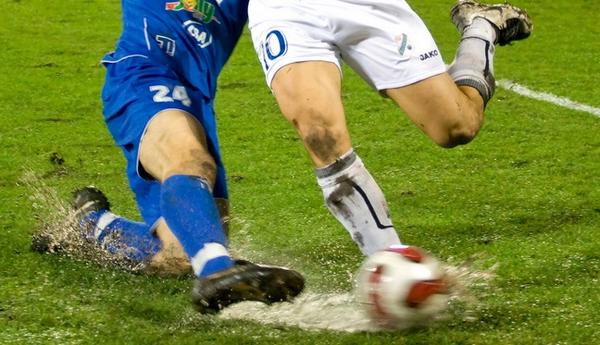How do I select the right soccer boot? Sports Podiatrist Tony Massarotti discusses…….
With many players having started their pre preseason campaign or having commenced their NPL season, we receive many enquiries asking for simple tips and advice when it comes to selecting the right soccer boot.
Whether you are young or old, everyone needs help selecting a new pair of boots from time to time. In reality while the boots don’t make the player, they can certainly help. It is important to select the boot right for you and not your favourite player. We have put together some information on the factors you should consider when selecting your next pair of soccer or football boots…….
Work out your playing style
Consider the position that you are most likely to pay:
- Goalkeepers: require great traction and an ability to move quickly sideways
- Defence: require more protection and ability to make a clean pass
- Midfield: require control and ability to run for 90 minutes in comfort
- Forwards: minimal weight for explosive movements and a clean strike zone
Playing surface: Studs vs Moulds
- Moulds are most suited to natural grass where it doesn’t rain regularly or artificial/synthetic grass
- Studs need to be worn on when the surface is soft enough for the studs to penetrate the surface and ideal for rainy, wet pitches.
- There are also bladed systems available which provide excellent traction on dry grass surfaces or artificial pitches.
Material choice: Leather vs Synthetic
The choices range from natural leather to synthetic. This is a personal choice as some players prefer the natural leather that mould over time to the foot shape while others prefer the consistent performance of synthetic uppers. If choosing synthetic keep in mind that they will have minimal stretch so if they feel tight from the first wear, this will be unlikely to change.
Boot weight
Many players prefer a nice, lightweight boot as it gives a feeling of responsiveness and power when running. The trade off is that the lighter boots do not contain the same degree of cushioning. Some higher-grade players may consider having two pairs of boots – a more cushioned boot for training and hard grounds, and a lighter boot for softer grounds. Lightweight boots often mean less durability.
Heel stack height
Many boots are quite flat at the heel which may place more stress on soft tissue structures including the calf and hamstring muscle groups. Predisposition to injury may be higher in the flat-heeled boot.
Midsole
Many modern football boots do not contain a midsole. The midsole is the foam material wedged between the outsole/grip and the upper material of the boot. Having a midsole in a football boot tends to make the boot slightly heavier but provides a degree of cushioning which can be important for players carrying a foot or lower leg injury. A Sports Podiatrist can advise you on whether your boot should have a midsole or not and direct you on which boots to consider.
Fit of the boot
Getting the width and the depth of the boot correct is paramount and yet the podiatrists at Eastern Foot Care Ringwood and Eastern Foot Care Knox regularly see inappropriate fitting of boots that have been chosen often more for colour than practicality! A tight boot can lead increase the risk of forefoot compression injury, and poor depth in the shoe can compromise the fit of custom foot orthotics if they are being used.
Sizing for you young players
For children under the age of 12 it is recommended that there is a baby finger space between the toes and the top of the boot. This should provide enough room for growth and mould the foot shape without affecting performance. A boot with a leather upper is also ideal as the leather will stretch slightly over time and provide a longer lifespan for the boots.
Need more information? Please don’t hesitate to contact Eastern Foot Care Ringwood (9870 1301) or Eastern Foot Care Knox (9887 2233). Our sports podiatrists are equipped with the latest knowledge in shoe technology and can provide the best in footwear advice related specifically to your foot and/or condition.
![1339999948logo_sportsmedicine[1]](https://footlabplus.com.au/wp-content/uploads/2015/06/1339999948logo_sportsmedicine1.gif)